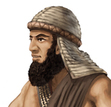Apocryphal Chris's Blog
November 29, 2022
The Etemmu Within - Episode 3B: The Black Oasis
DILBAT At last the PCs arrive in Dilbat, having been led here by the Aruru-harug letter that was discuss...
September 17, 2022
The Etemmu Within - Episode 3A: Death on the Purattu
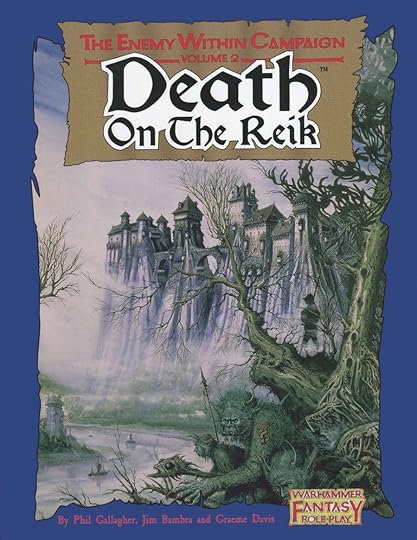
When we last saw our PCs, they were hightailing it out of Bad-Tibira, having been blamed for a series of...
The Etemmu Within - Episode 3a: Death on the Purattu

When we last saw our PCs, they were hightailing it out of Bad-Tibira, having been blamed for a series of...
January 9, 2022
The Etemmu Within - Episode 2: Shadows over Bad-Tibira
This post continues my examination of how the classic WFRP campaign, The Enemy Within, can be re-skinned to be played in the Mythic Babylon setting. This study was adapted from the first edition of Shadows Over Bogenahafen, published by Games Workshop and written by Graeme Davis, Jim Bambra, and Phil Gallagher. This edition can be found for sale at DriveThru RPG. Mythic Babylon is published by The Design Mechanism.
EPISODE 2: SHADOWS OVER BAD-TIBIRA
The PCs arrive in Bad-Tibira at the beginning o...
December 19, 2021
A Mythic Babylon Campaign? It's Already On Your Shelf!
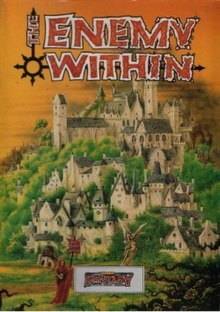
Of course, it immediately occurred to me that these are very...
October 31, 2021
This Year, Don't Forget About Lamashtu!
But nowhere did I see an image of Lamaštu, that most feared of Babylonian evils.
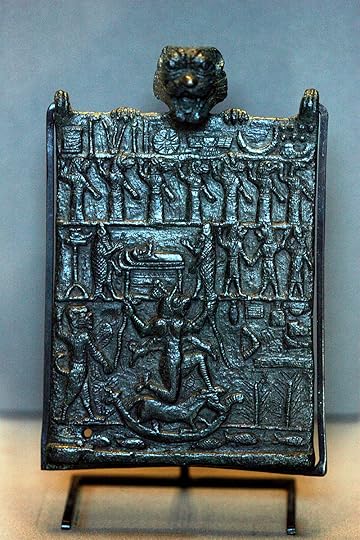 Image Source...
Image Source...
August 28, 2021
A Mythic Babylon Bibliography
July 20, 2021
Reading City of Djinns, by William Dalrymple
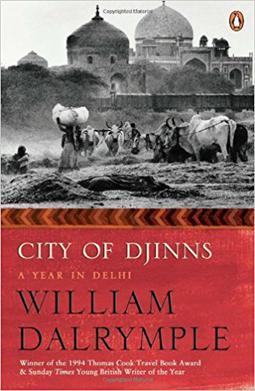
City of Djinns by William Dalrymple, 1993, 350pp
I first read this many years ago and decided to re-read it again after I finished Rudyard Kipling's Kim with my book club.
The subtitle, A Year in Delhi tells you pretty much exactly what you get - an account of Dalrymple and his wife's time in Delhi. Like most travelogues, this book features a few of the trials and tribulations associated with travel and living in a new place, but it offers much more than that. During his stay, Dalrymple delved into the history of the city, and the reader is treated to a book that weaves back and forth in time, telling us what the city as like way back when, an then revealing it again in 1993.
He covers a wide variety of topics, from historic people and places to the state of modern eunuchry, partridge fighting, and sufism. And the book has some great characters, like partridge aficionado Punjab Singh (whose name is surely an Indian version of Indiana Jones) and the archaeologist B.B. Lal. For a GM like me who likes to infuse their made up worlds with the verisimilitude of the real world, these characters are inspiration gold. It's these characters and some of the situations they find themselves in that I'd like to share with you here today.
One of the more interesting characters in the book is Pir Syed Mohammed Sarmadi, a very successful fraudulent dervish. Dalrymple describes him as -
"A hugely fat sufi with a mountainous turban, and elephantine girth, and a great ruff of double chins, he operates one of the most profitable faith healing businesses in India. One of Sarmadi's forebears was beheaded by the Mughal Emperor Aurangzeb after he wandered into the imperial presence stark naked, shrieking out sufi poetry."
"Everyday, Sarmadi sits cross-legged in his surgery between ten and five, with a short break for a kebab at lunch. It is a small room, and Sarmadi fills a great deal of it. Its walls are lined with powders and sacred texts, framed monograms of Arabic calligraphy and pictures of the Ka'ba at Mecca. There is a continuous queue of folk waiting to see him, and Sarmadi keeps the queue moving. Each petitioner gets about two minutes of his time. Sarmadi will listen, breaking his concentration only to clean his fingernails or to gob into his golden spittoon. When finished, Sarmadi will wave his peacock fan and blow over the petitioner, recite a bit of the Quran, write out a charm or a sacred number, and place it in an amulet. He will then dismiss the supplicant, having first received his fee of fifty rupees, a week's wage for an Indian labourer."Sarmadi seems to come from a long line of such Sufis, so with a little research, one could round fill out a full faction of them: https://reflectionsofindia.com/2014/07/22/sufisarmad/
Dalrymple also relates some of the stories of past visitors, like Dargah Quli Khan, who visited the city between 1737 and 1741 and reports on the local orgies:
"Hand in hand, the lovers roam the streets, while [outside] the drunken and debauched revel in all kinds of perversities. Groups of winsome lads violate the faith of the believers with acts which are sufficient to shake the very roots of piety. There are beautiful faces as far as the eye can see. All around prevails a world of impiety and immorality. Both nobles and plebeians quench the thirst of their lust here."Dalrymple later reflects on the modern city:
"Modern Delhi is thought of either as a city of grey bureaucracy, or as the metropolis of hard-working nouveau riche Punjabis. It is rarely spoken of as a lively city, and never as a promiscuous one. Yet, as I discovered that in December, the bawdiness of Safdar Jung's Delhi does survive, kept alive by one particular group of Delhi-wallahs. You can still find them in the dark gullies of the old city, if you know where to look."
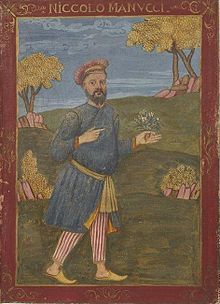
Through Dalrymple, we are exposed to the 17th Century writings of Niccolau Manucci, son of a Venetian trader who ran away from home at 14 to become a con artist, trickster, and artilleryman in 1660's India. It is partly through his eyes that we learn of Shah Jahan and his in-fighting children Dara, Aurangzeb, Jaharana, and Roshanara.
Of Aurangzeb, he says:
" Although Aurangzeb was held to be bold and valiant, he was capable of great dissimulation and hypocrisy. Pretending to be an ascetic, he slept while in the field on a mat of straw that he had himself woven . . . He ate food that cost little and let it be known that he underwent severe penances and fasting. All the same, under cover of these pretenses he led a secret and jolly life of it. His intercourse was with certain holy men addicted to sorcery, who instructed him how to bring over to his side as many friends as he could with witchcraft and soft speeches. He was so subtle as to deceive even the quickest witted people."
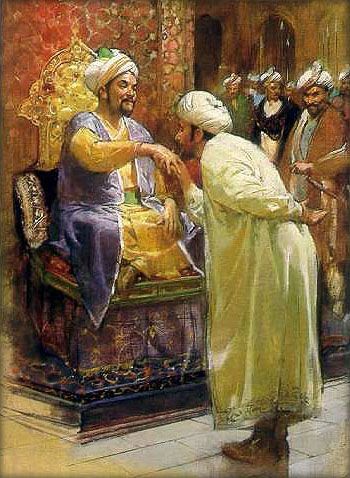
And Dalrymple tells us of Ibn Battutah, who resided for 8 years in Delhi in the 1330's and 40's with Sultan Muhammad bin Tughluk as a patron. Now, the sultan was a complete bastard (in a pique of anger at the citizens of Delhi, he once gave the entire citizenry 3 days to completely remove themselves to another city 40-days walk away, and when a blind man and a cripple were found still in the city, he had one ejected by catapult, and the other dragged to the new city behind a horse (only his leg arrived). But the sultan liked Battutah (mostly) and at one point decided to send him on a diplomatic mission to China.Battutah found himself at the head of an entourage of 1000 mounted bodyguards and a long train of camels carrying gifts, such as 100 concubines, 100 Hindu dancing girls, gold candelabras, brocades, swords, and gloves embroidered with pearls. Behind the camels came the most valuable gift of all - a thousand thoroughbred horses from Turkestan.
But only 100 miles into his journey, his train was attacked by Hindu rebels (the country was full of rebels) and Battutah was separated from his group and captured. He managed to escape and re-join his party. At Calicut on the Malabar coast, he loaded everything onto four dhows to sail to China, but lingered on shore for Friday prayers. A sudden storm blew up, grounding and breaking up the boats. The slaves, troops, and horses all drowned. Not daring to return to Delhi, he hightailed it to China on his own.
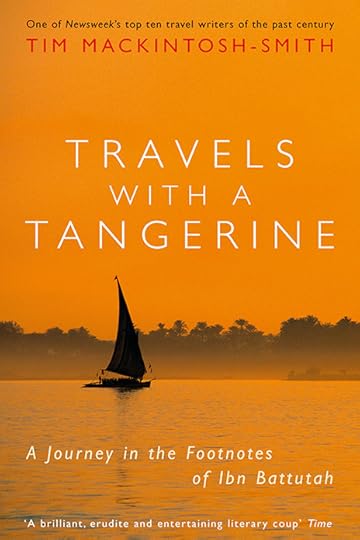
I'll return to Ibn Battutah in a future post, and maybe we'll also look at another travel writer - Tim Mackintosh Smith - who not only wrote an annotated translation of The Travels of Ibn Battutah, but also Travels With a Tangerine: A Journey in the Footnotes of Ibn Battutah.
As for Dalrymple, he's an evocative writer and I found this book a pleasure to read. It won two awards, has been adapted into a play, and (I'm quite sure, though it doesn't say so on Wikipedia) was turned into a television series in the UK. Here's the Wikipedia page: https://en.wikipedia.org/wiki/City_of_Djinns
June 29, 2021
The Oxus Civilization
Origins on the Bronze Age Oasis Civilization in Central Asia by Fredrik Talmage Hiebert, 1994, 240pp
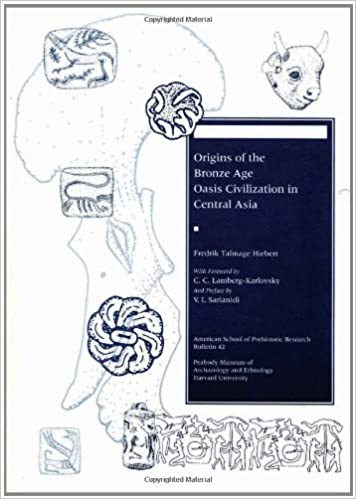
This book contains an archaeological survey of the oasis civilizations Margiana (and by extension, of Bactria, which is closely related). Together, these are known as the BMAC (Bactria-Margiana Archaeological Complex) cultures, of which little is written in English.
The author spent a fair amount of time excavating at Gonur Depe, one of the more impressive archaeological sites in the Mugrab delta in Turkmenistan, and it's quite clear he's a expert on the subject. The constructed remains of this ancient civilization are impressive. The finds of artifacts are a little less so, but they reveal interesting ties to both the Indus civilization, and to Sumer/Akkad/Early Babylonia. The oasis civilizations were rich in agriculture, and consequently in food, human resources, and textiles - much like Sumer and Akkad. But also like Sumer and Akkad, they were poor in minerals and metals, necessitating trade with the nearby mountainous communities (which are not covered in this book, and which were likely the source of both lapis-lazuli and tin for both of these civilizations).
To understand this importance of this culture a little more, check out this image of the site of Gonur Depe in Turkmenistan - the one at which Talmadge excavated:

Gonur Depe is a large site of 55 Hectares occupied in different stages between c.2500 BC and c.1500 BC. The larger built-up portion in the centre of the image is known as Gonur North, and was occupied up to about 1900 BC. The southern section with the thick-walled fortress in the centre was occupied from 1900 onward. Fans of the Glorantha game setting might well wonder if Middle Bronze-Age Gonur South was the original Pavis, and Gonur North the Big Rubble.
Gonur is the largest ruin in the Murghab Delta region, but over 150 other settlements have also been found so far.
The remains are as impressive as any to be found c.2000 BC. It's really too bad more isn't written about them in English. An updated survey, geared to the lay-person, is sorely needed.
This particular book offers such a survey, but it's now more than 20 years out of date, and spends far too much time describing the ceramic complex of the sites to be of interest to the general reader. Apart from that, the book is well written offers a sufficient survey of the archaeological remains of these sites, but doesn't offer much synthesis - it doesn't spend much time trying to put all the pieces together to create a picture of the civilization.
A more contemporary take - one that builds upon both early and late excavations, and takes into account our understanding of other cultures both near and far, would be a far more interesting read. Such a book hasn't been available in English, as far as I can tell.
At least not until now. Luckily for us ancient history junkies, Routledge has released a monster entry in their 'World Of' series, called The World of the Oxus Civilization. The hardback version available now sells for a mere $200 U.S. dollars and is nearly 1000 pages. But there's a more affordable Kindle version on the market, and a paperback is scheduled to be released next March.
These books contain collections of articles, each in its own chapter and each by a different author. Each chapter deals with a special topic, such as a specific period in history, writing, the law, social organization, kingship, queenship, and what have you. My copy of The Elamite World, for example, has 41 chapters and is split into 8 parts. These parts are:
1. Imagining Elam (Research & Sources), 2. Land and Peoples, 3. Elam Through History, 4. Close Encounters on Eastern and Western Fronts, 5. Language and Writing, 6. The Material Culture of Elam7. Elamite Society, and8. The Legacy of Elam
So I'm expecting something similar from this book, and I'm very much looking forward to it.
https://www.routledge.com/The-World-o...
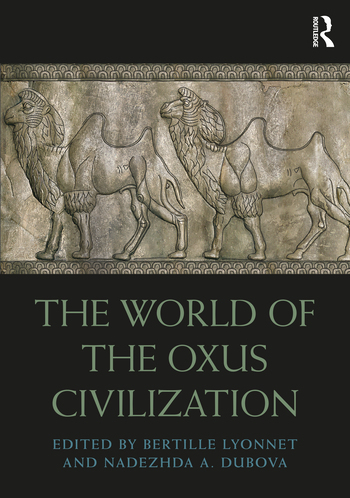
May 26, 2021
What Ancient Babylon can teach us about World-Building
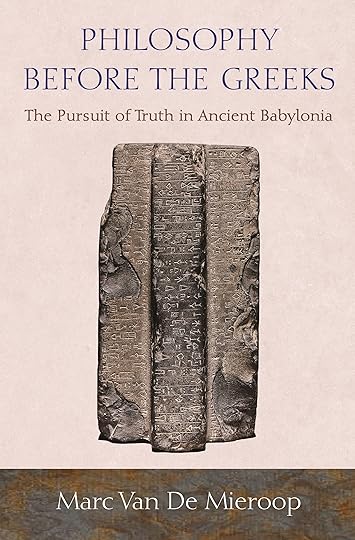
Philosophy Before the Greeks: The Pursuit of Truth in Ancient Babylonia
By Marc Van de Mieroop, 2016, 301pp
In this essay expanded into book form, Marc van de Mieroop (author of several well regarded books on ancient Babylonia, including A History of the Ancient Near East and King Hammurabi of Babylon: A Biography) describes his hunt for evidence of philosophy (and more specifically epistemology) in Babylonian culture. He presents his case that ancient Babylonian scribes adhered to a system of knowledge that has so far eluded historians and contemporary observers, and in having such a system of knowledge, they therefore were early students of philosophy.
After describing his intent (and discussing a little of Greek philosophy by comparison) He presents three examples to illustrate why he thinks the Babylonians had a theory of knowledge. These examples are:
Lexical lists (lists of words that Babylonians compiled, organized in ways we can't understand but that make sense in a Babylonian context),
Omen lists (lists of omens that could be used in prophecy)
Law Codes (effectively, lists of judgments in legal cases, though these also fixed some prices).
After examining each of these types if lists (two chapters are devoted to each) the author concludes that the secret to understanding systematized Babylonian thought is couched in their writing, and in particular in the writing of lists.
According to van de Mieroop, Babylonians believed that true knowledge was encoded in writing because writing was a gift from the gods and that the writing of the gods existed everywhere in the natural world (in the stars, the liver of a lamb, and so on). The natural conclusion was that, because writing was the purview of the gods - if you could write about it, it was true. If you could encode it in writing so it could be read multiple ways to have meanings that could support one another (for example, if the Sumerian translation and the Akkadian translation were complimentary), then the truth was that much stronger.
Van de Mieroop ends the book by stating that "it is there, [in writing], that we have to look for the Babylonian conceptual autonomy and the key to their philosophy." In saying this, he seems to acknowledge that he's got no smoking gun, but the book presents an idea that points to something bigger..
I found his analysis of Babylonian thought to be quite interesting, even eye-opening. I have to say I wasn't always convinced by the examples, but it seems fairly clear to me that Babylonians had some kind of shared system of knowledge - even if there aren't any period texts that explicitly reveal it. Could that system be hiding in the writing? Possibly. Was there a pan-cultural study of the nature of knowledge? I'm not convinced, but scribal conventions lasted a long time and spread over a wide area, so perhaps there was. We've only scratched the surface of what the Babylonians can tell us – we've translated only a fraction of the total number of tablets so far excavated, and perhaps hundreds of thousands still lie under the mud, waiting to be found. So who knows what more they have to reveal to us?
The book treads heavily on the idea of determination language, but stops shy of the Sapir-Whorf hypothesis and instead steers us to looking at show script can influence culture, and culture script.
As I read the book, I wondered if there was a lesson in here for game design – or at least for the design of fictional worlds? The thing that stuck with me the most was the idea that a scribe could write something into existence. Gamers and game-writers do this all the time! Do we do it with lists? Hell yes - we love lists! Below are a number of examples from various RPGs published over the years. Before we get to those, though, I'd like you to keep in mind the world-building potential of lists.
Philosophy Before The Greeks offers one particularly stirring example of how lists can reveal how different cultures look at the world; In the book, van de Mieroop drops a quote from Jorge Luis Borges, who is in turn quoting from a 'Chinese encyclopedia'. This is how that encyclopedia classifies animals:
“In its remote pages, animals are divided into:
a. belonging to an emperor
b. embalmed
c. tame
d. sucking pigs
e. sirens
f. fabulous
g. stray dogs
h. included in the present classification
j. frenzied
k. drawn with a very fine camel hair brush
l. etcetera
m. having just broken the water pitcher, and
n. that from a long way off look like flies.”
This reads very much like the table of contents of a fantastic bestiary, doesn't it. As a thought exercise, try to imagine the world that this list evokes - do you see the kernel of a setting?
Compare this to an example from an actual RPG setting - the Creatures Chapter from the Mythic Babylon setting for Mythras, from which I share an extract. We can immediately see we're not in Kansas anymore, and the the logic is askew from what we might expect:
MYTHIC BABYLONIAN CREATURES
BEASTS: Bear, Bovines, Canines (including lions), Elephants, Equids, Felines, Griffin, Insects, Lion-Fish, Primates, Suhurmašu, etc.
HYBRIDS: Scorpion Men, Hari People. Mer-People, Kurgarra, Bull Men, Hairy Hero Men, etc.
DEMONS AND SPIRITS: Animal Demons, Bad News Demons, Demons of Desolation, Underworld Demons, Wind Spirits, Zaqiqu, etc.
MONSTERS AND FALLEN GODS: Asag, Anzud, Forest Guardians, Lamaštu, Pazuzu, Three Horned Serpents, etc.
Considering the various kinds of Babylonian lists, do we have similar lists in Role Playing Games? Do gamers also have a shared means of communication embedded in the making of lists? Turns out we do! Let's compare these to the types of lists van de Mieroop cites in his book.
Simple lexical lists are valuable resources for understanding game worlds, too. Here, for example, are two lists that reveal the kind of person one can play in the game of Outremer by Flying Mice Games. These lists are not only tools for describing who you can be in the setting, but they hint very strongly at the nature of play. You may ask – Is it a mystical setting? How much combat is there? In what cognitive era does the game take place? With just these two lists, you'll have a pretty good idea of what the game world is like.
OUTREMER - TABLE OF PROFESSIONS
Actor Apothecary Archivist ArtisanArtist Barber-Surgeon Bounty Hunter Caravan Guard
Courtier Courier Courtesan Cutpurse
Dancer Doctor Engineer Fencer
Footpad Friar/Preacher Gentleman Farmer Guardsman
Herbalist Herdsman Highwayman Hunstman
Knight/Faris Lord Mercenary Merchant
Musketeer Musician Naval Officer Playwright
Pirate Poet Priest/Rabbi/Mullah Professor
Sargeant Smith Smuggler Soldier
Spy Street Performer Teamster Thief
Tinker Turcopole Yeoman
OUTREMER – TABLE OF PATHS
Esotericist Magus Minstrel Crusader/Ghazi
Kabbalist Sorceror Mechanist Oracle
Dervish Snake Charmer Fortune Teller HealerMystic Faqih
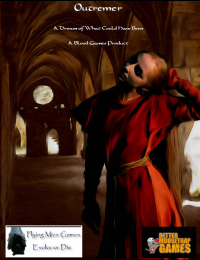
Lexical lists in games can also tell us how we can interact with the world. Some games have lists of the things you can buy and sell, or of the kinds of things you'll find in treasure troves. Others tell you exactly how you can engage the world through the game mechanics. Here's a partial list of the talents, skills, and knowledges a character may have in Ars Magica Second Edition. Here you can see what a character can know, learn, and do in the world:
ARS MAGICA – TALENTS, SKILLS, KNOWLEDGES
Exceptional Talents: Arcane Skills: Arcane Knowledges:Alchemy Certamen Hermes History
Animal Ken Parma Magica Hermes Lore
Contortions Magic Theory
Direction Sense Forester Skills:
Empathy Animal Handling Casual Knowledges:
Enchanting Music Survival (Area) Lore
Entrancement Track Church Lore
Healer Faerie Lore
Hex Performance Skills: Fantastic Beast Lore
Magic Sensitivity Acting Legend Lore
Mimicry Storytelling Occult Lore
Perfect Balance Jongleur Speak (Specific Language)
Premonitions Sing
Read Lips Play (specific instrument) Formal Knowledges:
Second Sight Church Knowledge
Sense Holiness & Unholiness Mental Skills: Humanities
Visions Concentration MedicineWeather Sense Meditation Scribe (Specific Alphabet)
In games with life-path style generators, we can learn not just what we do and how we do it, but more about how we are by examining our past. For example, this list from the Denizens of the North, supplement for the Fate of the Norns: Ragnarok game reveals how two party members got to know one another and how they feel about each other now:
DENIZENS OF THE NORTH – DWELLER RELATIONSHIPS LIST
Circumstance: State:
Drinking Buddies MistrustWere robbed by the same criminal Bound in PurposeMet at a funeral RivalryMade a bet; will travel together until someone wins Greed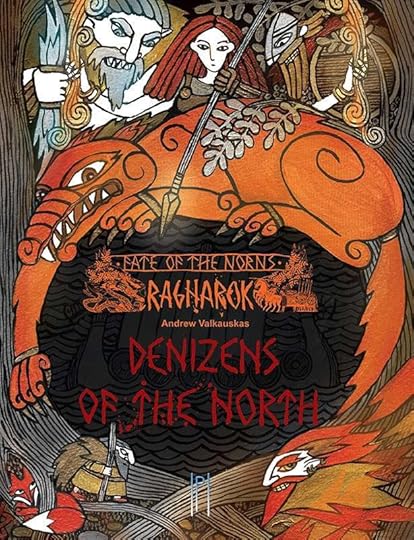
OMEN LISTS (to predict the future of our world)
Yes, we have lists in gaming for this, too. Another list from Denizens of the North reveals something of the character's past, and like a Babylonian oracle, points to something in their future, and this brings of to the Omen Lists of gaming:
DENIZENS OF THE NORTH – LIST OF BRUSHES WITH POWERYou met an important merchant that returned from Miklagard. You may purchase a rare item.While in Ath Cliath you gained audience with King Sitric. He had heard of your great exploits tasked you with hunting his enemy – the Hibernian clans.Odin the Wanderer has marked you as a promising hero. Since that day your encounters have become increasingly challenging and deadly.
The Artesia: Adventures in the Known World RPG has copious lifepath tables for figuring out who your character was in their past, from birth to maturity. They'll not only tell you about your birth sign, your lineage, and some of the events from your childhood, but they specifically tie these events to your stats so you can see how the world can shape your character:
ARTESIA: ADVENTURES IN THE KNOWN WORLD – LIFEPATH TRICKY OMEN TABLE
An owl watches your birth. You will be blessed with insights no one else will have
+1 WIS, +1 PER, -1 MEMThe Evening Star is seen in the night sky. You will lead a life filled with beauty and sensual pleasure.
+1 APP, +1 PRE, -1 WILLA satyr is seen nearby. Your life will be filled with trickery
+1 IMAG, +1 PRE, -1 WILLThe Conqueror Star is seen in the night sky. You will become a leader of men.
+1 PRE, +1 WILL, -1 EMP
Just as Babylonian omen lists describe the future, so can the lists found in games. These take the form of random events lists, encounter lists, and adventure generators. Here's an excerpt from list of events from Ars Magica. The list is given numbers in the book so that a random event can be generated. Rolling the die puts the future in the hands of the gods:
ARS MAGICA – EXTRAORDINARY RESULTS FROM ARCANE EXPERIMENTATION (DISASTERS)1. Explosion2. Overwhelmed3. Deterioration4. Lab Ruined5. Something Valuable Destroyed6. Mentally Enfeebled7. Threat to the Covenant8. Creation Turns on You
In the Skyrealms of Jorune RPG 3rd Ed., published by Chessex in 1992, we find a series of randomizable lists which work together to generate encounters. Using these, the Gamemaster (or Oracle, if you will) can quickly determine the species, profession, demeanor, and intent of an encounter – and also the contextual backdrop against which it occurs. Here are a few of the possible results:
SKYREALMS OF JORUNE – ENCOUNTER GENERATORA human Durlig puller is encountered in the city while a protest is going on. This well-groomed person wants someone to settle a dispute.A thivin klade mother is encountered in town during the annual Cletch (taxation), and seems to have an unexplained interest in the party.A woffen archer is met during the Drenn ceremonies. He chews his gerrig and reveals that he's chasing someone.

Returning again to Outremer for another example, we find similar lists that allow for the generation of missions including rumors to be investigated, adventure locations, the agents behind the rumor, and even some suggestions of 'sweeteners' to convince the player characters to partake. Here are just a few of the possible results:
OUTREMER - PLOT SEEDS RESULTING FROM THE ADVENTURE GENERATORPeasants have been disappearing in the Duchy of Acre; Devils are said to be behind the rumor. One reward for the adventure will be a knighthood for a deserving member.
Prodigies were sighted in the Principality of Galilee; The Pope is said to be behind the rumor. The services of a local spy ring will be provided.
A Djinn ruler has asked for our aid in the city of Tripoli; A sorcerer is said to be behind the rumor. Transport will be provided to those who heed the call.LAW LISTS (to help us understand how the world works
We've seen how lists can describe the game world to us (lexical lists), and how they can even help determine the course of future events (omen lists), but what about the legal lists? Yes, of course, gaming lists also describe the rules of engagement with the world and what kind of judgments a player can expect. Here, from Swashbucklers of the 7 Skies by Chad Underkoffler, is a 'quick list of the steps of a Turn of the Duel':
Engage Foes (initiative)Divvy Duel Dice (plan attack vs defence)The Charge (declare dice)The Clash of Steel (attacker and defender roll dice)The Touch (apply damage if necessary)Volte-face (repeat steps 3-5, reversing attacker and defender rolls), andAfter all combatants have had their attack and defense, go to Next Turn. (That is, unless someone calls for an impasse.)
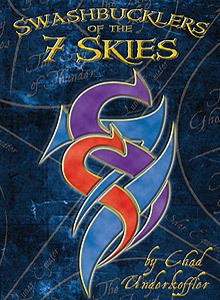
IF YOU CAN WRITE IT, IT'S TRUE (World-Building via Lists)
In his book, Philosophy Before the Greeks: The Pursuit of Truth in Ancient Babylonia , Marc van de Mieroop explains how the ancient scribes came to believe in the divine power of writing – in the creative potential encoded in the recording of lists. “If you could write about it, it was true.” Scribes began to pad lexical lists with imaginary, but completely logical, entries. If they could invent it and the gods had given them the signs to encode these things in clay, then surely they could exist. Does this not describe the very act of creating imaginary worlds?
Here's an example of one list that does just that from the blog of my friend John Bell. It's a list of setting elements that can be tossed together to create scenarios. He describes this list as being made from 'regular fantasy stuff', and it'll probably seem like anything but that. But John has a fertile mind and makes both wonderful settings and creative scenarios and campaigns – for him, this is 'regular fantasy stuff'. See if this list doesn't remind you of the list of animals from the Chinese Encyclopedia shared above. If it does, we've come full circle. Lists are the bones of world-building.
LIST OF ADVENTURE ELEMENTS FROM THE RETIRED ADVENTURER:
Ooze-knights on motorbikes
A Cuban communist air-pirate + her air ship
Somebody's specific memory-juice in a reusable thermostat
A twelve-armed demon who is chief marketing officer of an "Uber for dental hygiene" start-up
Cyber-trolls that all started off as one troll
A dog with strong opinions
A cool magic tank that shoots lasers but not from its gun
The prophetic intestines of a guy named "Joseph Blankenwell"
A boiling cloud of acid with a New York accent and a heart of gold
A skeleton rights activist who is also a cleric of the Big Fire
A giant wolf-spider thing who works for an insurance company
A Jacobin golem with wheels
Thousands of obols
Cyberbullying
Schistosomiasis
A nuclear reactor on tank treads with a giant glowing crack
A 33-gallon fishtank with no top that's full of expired fireworks
Six ghost paladins on a holy quest that's kinda sketchy and low-key racist
An EDM dance party clubThe colour "red"
The Retired Adventurer: Planning Campaign as Series of Decisions

